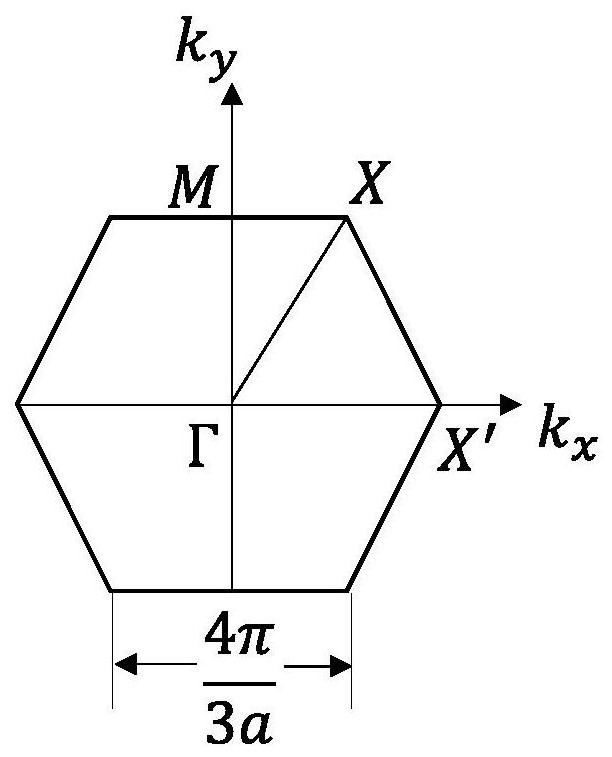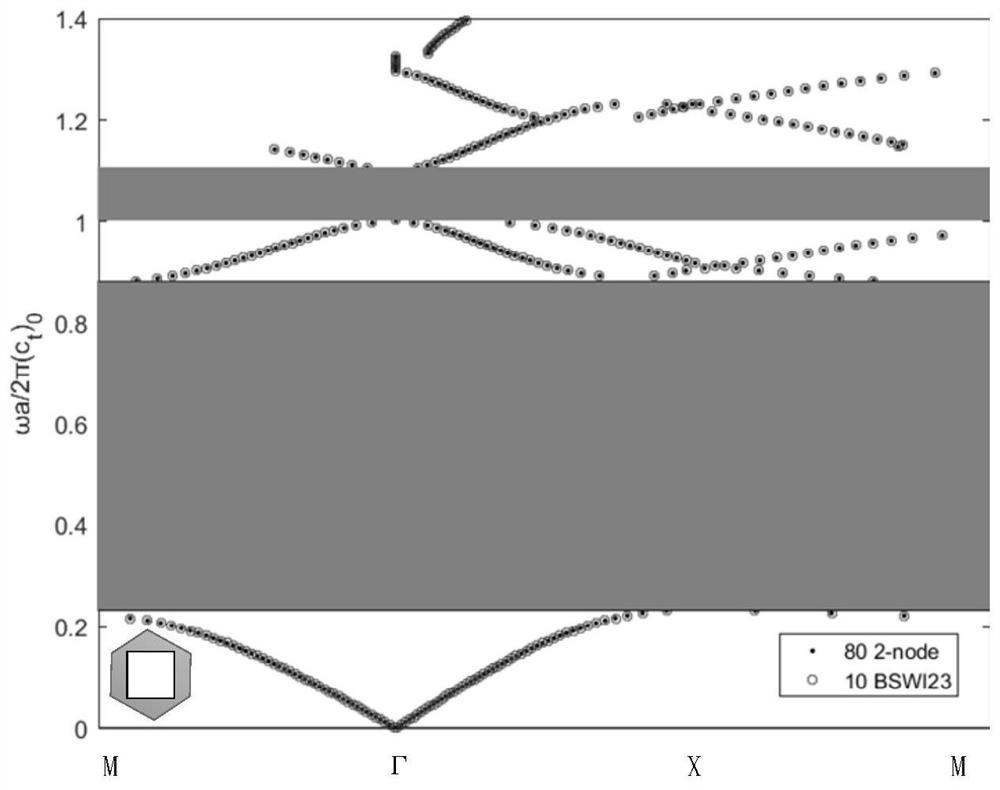Bandgap Design Method for Triangular Lattice Phononic Crystal Based on Wavelet Boundary Element Model
A triangular lattice, phononic crystal technology, applied in design optimization/simulation, optical components, complex mathematical operations, etc., to achieve the effect of good calculation efficiency and accuracy, high calculation accuracy
- Summary
- Abstract
- Description
- Claims
- Application Information
AI Technical Summary
Problems solved by technology
Method used
Image
Examples
Embodiment
[0144] Example: This example mainly verifies the superiority of the wavelet boundary element numerical solution model for calculating the band gap of triangular lattice phononic crystals. Embedding a square gold (Au) scatterer into an epoxy matrix, where ρ = 19500 kg / m for gold material 2 , c t =1239m / s, for epoxy resin material, ρ=1180kg / m 2 , c t =1160m / s. For other calculation parameters, filling ratio f=0.3493, δ=5×10 -2 , the minimum normalized frequency τ 0 =5×10 -3 , the maximum normalized frequency τ max =1.4, calculation step Δτ=5×10 -3 . In addition, the 2-point integral formula is used in the calculation process. For the convenience of expression, the number of units is the number of discrete units of the matrix unless it is clearly stated.
[0145] 1 BSWI respectively 23 Elements and 8 conventional linear elements discretize each boundary of the matrix and scatterer. image 3 The solution results of the two discrete methods are given, where (c t ) 0 In...
PUM
 Login to View More
Login to View More Abstract
Description
Claims
Application Information
 Login to View More
Login to View More - R&D
- Intellectual Property
- Life Sciences
- Materials
- Tech Scout
- Unparalleled Data Quality
- Higher Quality Content
- 60% Fewer Hallucinations
Browse by: Latest US Patents, China's latest patents, Technical Efficacy Thesaurus, Application Domain, Technology Topic, Popular Technical Reports.
© 2025 PatSnap. All rights reserved.Legal|Privacy policy|Modern Slavery Act Transparency Statement|Sitemap|About US| Contact US: help@patsnap.com



